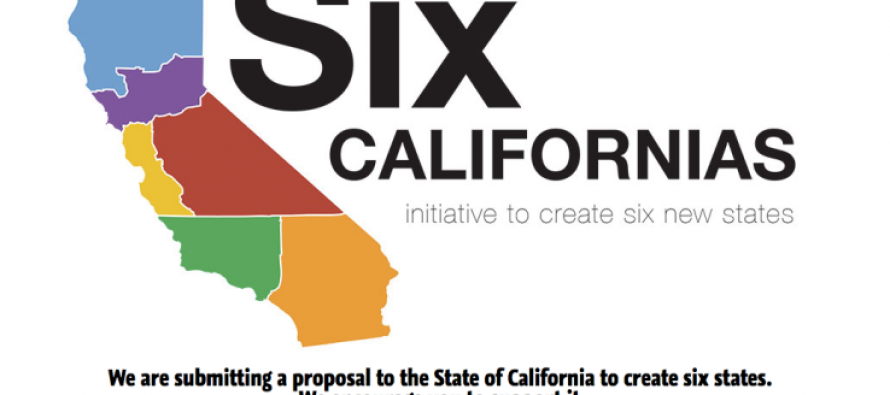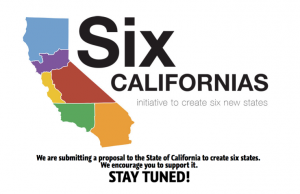‘Six Californias’ will go before voters

 Its debut on a California ballot might still be two years away. But this month, supporters successfully verified the quixotic, Silicon Valley-powered Six Californias initiative obtained the necessary signatures to receive an up or down vote.
Its debut on a California ballot might still be two years away. But this month, supporters successfully verified the quixotic, Silicon Valley-powered Six Californias initiative obtained the necessary signatures to receive an up or down vote.
As the Los Angeles Times reported, the Six Californias movement needed approximately 808,000 signatures by July 18. Venture capitalist Tim Draper, who masterminded the proposal, put almost $5 million of his own money toward achieving the figure.
Last week, Draper, a political independent, announced in a press conference that his street teams had amassed 1.3 million signatures. Amid a flurry of questions, he also acknowledged the two-year run-up to 2016 will provide Six Californias advocates much-needed time to sway public opinion, which stands at 59 percent against a state breakup.
Adding an extra layer of drama, the rival group One California petitioned Secretary of State Debra Bowen to investigate voter fraud surrounding the collected signatures — alleging that signature gatherers in at least a few instances intentionally misrepresented the goal of the initiative. That’s a misdemeanor in California.
Political crosswinds
Alone, a few thousand discarded signatures won’t strip Six Californias from the ballot. But even if it passes, the Golden State’s dismemberment would have to receive a stamp of approval both from the California Legislature and the U.S. Congress.
It’s not just supporters of Draper’s six statelets, however, who are hoping the secession scheme comes before voters. Capturing widespread rural and conservative discontent, the plan has attracted the admiration of some Republicans for its spirit, if not its practicability.
Although California’s Republican members of Congress are almost all reluctant to embrace the Six Californias plan itself, more than a few sympathize with the frustrations behind it. GOP Reps. Jeff Denham and Doug LaMalfa, both of the Golden State, told The Hill that Californians’ different needs call for different ideas. For Denham, “dividing up into states would be something to look at.” But, said LaMalfa, “I would think that if you are going to divide California, it’s ambitious to do three states or just two.”
Crafting the pitch
Without resounding support from sitting state officials, Draper and company have the luxury of choosing for themselves how they intend to appeal to voters. Fittingly for a proposal that relies on sectional interests and identities, Six Californias likely requires more than one rationale to maximize support.
In a new report issued by the California Legislative Analyst, for instance, the plan is shown to leave two of the new states richer, and four poorer. That might be a problem for some voters. But for at least some in northern California, the prospect of a short-term economic hit is more appealing than the alternative.
Jefferson Declaration Committee spokesman Mark Baird told the Washington Times that “the short-term economic hit would be far preferable to the state’s slide into a morass of ever-greater debt, taxes and regulation.”
In interviews, Draper himself takes a more cheerily libertarian approach to framing California’s challenges with sectionalism. Rather than berating Bay Area Democrats for capturing state policy, he talks up what classic libertarian theorists such as Robert Nozick call “exit options.”
‘Our government’
As Draper put it, six states would give Californians “a chance to make it our government. We can make it more local, better representation, closer to us. It also creates a choice. If some people feel that their government isn’t working for them – and I know a lot of people in very poor regions feel that the status quo is not working for them – this would be an opportunity for them to easily move to another state without leaving the beautiful weather we get here.”
It’s a logical rethink of long-familiar, but often inconsequential, Republican arguments in favor of “devolving” power from Washington and “returning” it to states. As residents of red and blue states alike have discovered, state governments can sow just as much partisan and policy opposition as the federal government.
Ostensibly, it’s easier to bring about change in government at the state level than it is to alter the federal landscape. But in states that are deep red or, like California, deep blue, any kind of fundamental political change requires a longer time span than many residents are willing to accept.
Related Articles
Pot initiatives join forces
Skittish at the thought of divided loyalties leading rival pot initiatives to defeat, two major marijuana legalization groups united behind
Brown pushes climate policy with Pope Francis
This week, Gov. Jerry Brown drew global headlines as one of the most outspoken officials at a world conference on climate
Jerry Brown on Bill Clinton
“If Clinton didn’t exist, the Trilateral Commission would have to invent him because he has deprived and drained the radical




